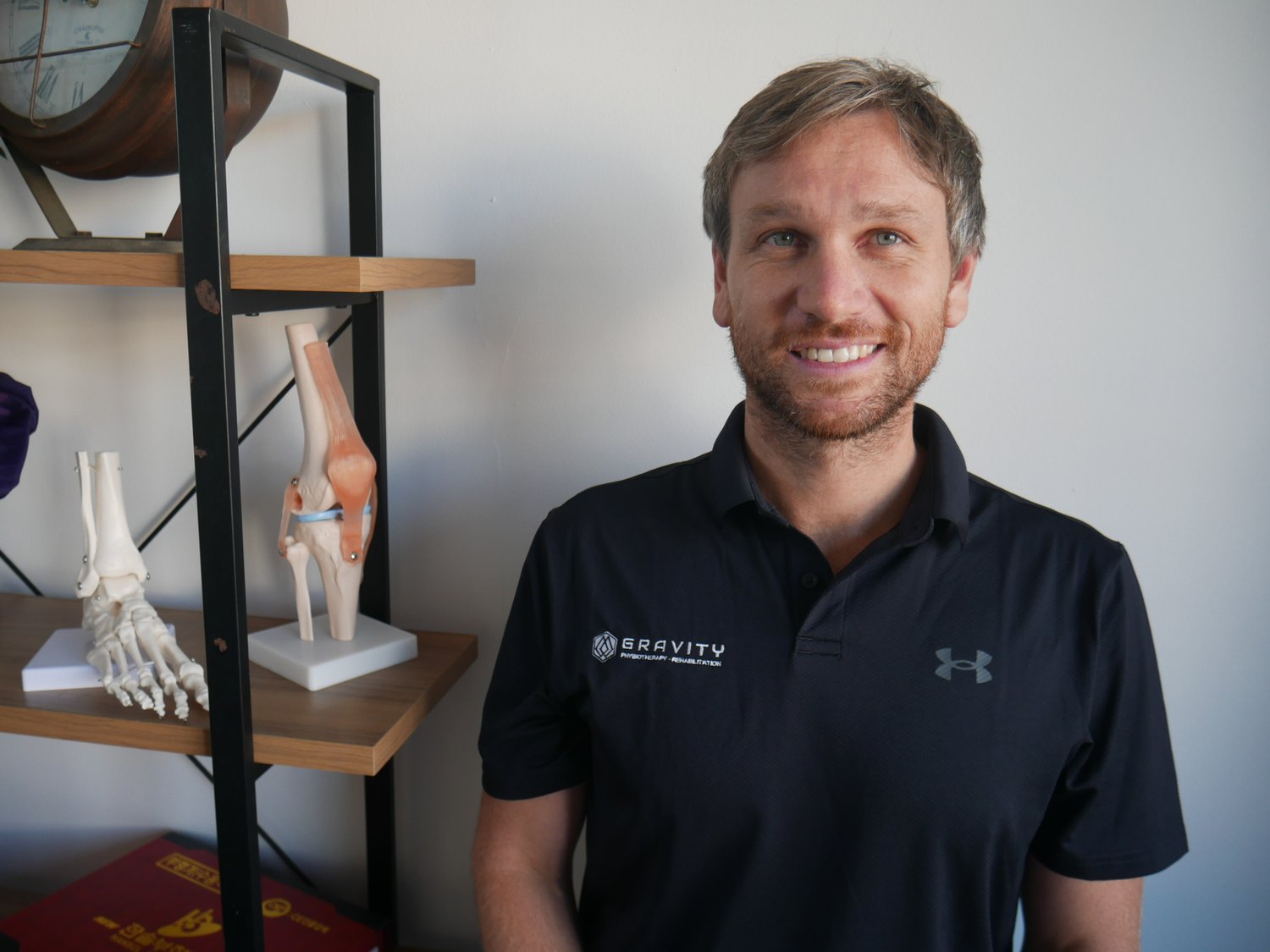AC Joint Sprain: Causes, Symptoms, Diagnosis, and Treatment
The AC joint, or acromioclavicular joint, is a crucial part of the shoulder that connects the collarbone (clavicle) to the shoulder blade (scapula). An AC joint sprain, also known as an acromioclavicular joint sprain, is a common injury that occurs when the ligaments connecting these two bones are stretched or torn. This article will provide a comprehensive overview of AC joint sprains, including their causes, symptoms, diagnosis, and treatment options.
What Causes an AC Joint Sprain?
AC joint sprains are typically caused by a sudden traumatic event that puts excessive force on the shoulder joint. The most common cause is a fall directly onto the shoulder, particularly onto the "point" of the shoulder. This type of injury is often seen in contact sports such as football, rugby, or hockey. Additionally, a fall onto an outstretched hand, commonly experienced in activities like cycling or horseback riding, can also result in an AC joint sprain.
Symptoms of an AC Joint Sprain
The symptoms of an AC joint sprain can vary depending on the severity of the injury. Common symptoms include:
Pain and swelling around the AC joint
Pain when moving the arm
A visible bump or deformity on the top of the shoulder
Joint instability
It is important to note that these symptoms can overlap with other shoulder injuries, such as shoulder separations or dislocations. Therefore, it is essential to consult with a medical professional for an accurate diagnosis.
Diagnosing an AC Joint Sprain
To diagnose an AC joint sprain, a medical professional will typically begin with a thorough physical examination. They will assess the range of motion, perform specific tests to evaluate the stability of the joint, and check for any visible deformities. In some cases, an X-ray may be recommended to rule out any fractures or other underlying conditions. Additionally, an MRI scan may be utilized to assess the severity of the ligament damage and determine the most appropriate treatment approach.
Grading of AC Joint Sprains
AC joint sprains are often categorized into different grades based on the severity of the injury. The grading system helps guide treatment decisions and provides an understanding of the expected recovery time. The commonly used grading system for AC joint sprains is as follows:
Grade I
Mild sprain with no significant tearing of the ligaments
Usually referred to as a sprain
Treatment typically involves rest, anti-inflammatory medication, and the use of a sling or immobilizer to support the joint.
Grade II
Partial tearing of the acromioclavicular ligament and potential involvement of the coracoclavicular ligaments
Noticeable bump on the shoulder due to ligament laxity
Treatment may include the use of a sling, rest, ice and heat therapy, anti-inflammatory medication, and physiotherapy to regain full motion and strength.
Grade III
Complete tearing of the acromioclavicular and coracoclavicular ligaments
Prominent bump on the shoulder, indicating significant joint instability
Treatment options range from conservative management with rest, immobilization, and physiotherapy to surgical intervention for more severe cases.
Grade IV
Unusual injury where the clavicle is pushed behind the AC joint
Treatment may involve surgical intervention to realign the joint and stabilize the clavicle.
Grade V
Severe injury with the muscle above the AC joint punctured by the end of the clavicle, causing a significant bump and shoulder deformity
Surgical intervention may be necessary to address the muscle and joint damage.
Grade VI
Exceedingly rare injury where the clavicle is pushed downwards and becomes lodged below the coracoid process of the scapula
Surgery is typically required to relocate the clavicle and restore joint function.
Please note that the treatment approach for each grade may vary based on the individual's specific circumstances, and consultation with a healthcare professional is essential for accurate diagnosis and treatment planning.
Non-surgical Treatment Standards for AC Joint Sprains
For milder AC joint sprains, non-surgical treatment options are often successful in promoting healing and restoring function. These treatment options may include:
Rest and Immobilization: Resting the shoulder and limiting activities that aggravate the injury can help reduce pain and inflammation. Immobilization with a sling or brace may also be recommended to provide support and protect the joint during the initial healing phase.
Cryotherapy: Applying ice packs to the affected area can help reduce swelling and relieve pain.
Pain Medication: Over-the-counter nonsteroidal anti-inflammatory drugs (NSAIDs) may be recommended to alleviate pain and reduce inflammation. However, it is important to follow the recommended dosage and consult a healthcare professional before taking any medication.
Physiotherapy: A structured physiotherapy program is crucial for AC joint sprain recovery. Physiotherapy exercises can help improve joint stability, restore range of motion, and strengthen the surrounding muscles. The exercises may include stretching, strengthening, and mobility exercises tailored to the individual's specific needs.
Surgical Treatment Options for AC Joint Sprains
In cases where non-surgical treatments do not provide adequate relief or for more severe AC joint sprains, surgical intervention may be necessary. Surgical options for AC joint sprains include:
Reconstruction with Suture Loop or Screw: The surgeon may use sutures, screws or even a plate to stabilize the AC joint and restore proper alignment. These methods help promote healing and prevent joint instability. The Lockdown surgical technique is a common procedure for AC reconstruction.
Artificial Ligament: In some cases, an artificial ligament may be used to reinforce the damaged ligaments and provide additional stability to the AC joint.
The decision to undergo surgery will depend on various factors, including the grade of the AC joint sprain, the individual's overall health, and their specific needs and goals. A consultation with an orthopedic specialist is crucial to determine the most appropriate treatment approach in each case.
Rehabilitation and Recovery
Regardless of whether non-surgical or surgical treatment is pursued, a comprehensive rehabilitation program is essential for a successful recovery from an AC joint sprain. The goals of rehabilitation include:
Pain Management: The rehabilitation program will focus on reducing pain and inflammation through various modalities such as ice, heat, and ultrasound therapy.
Range of Motion Exercises: Gradual exercises will be introduced to restore the normal range of motion in the shoulder joint. These may include passive, active-assisted, and active range of motion exercises.
Strengthening Exercises: Specific exercises targeting the upper trapezius, deltoids, and serratus anterior muscles will be incorporated to improve joint stability and restore strength. These exercises may involve resistance training, theraband exercises, and functional movements.
Functional Training: As the recovery progresses, functional exercises and activities that simulate real-life movements will be introduced to improve coordination, balance, and overall functional capacity.
Gradual Return to Activity: The rehabilitation program will be tailored to the individual's specific needs and goals, gradually reintroducing activities and sports as tolerated. The timeline for returning to full activity will vary depending on the severity of the injury and the individual's progress.
It is important to follow the guidance of a physiotherapist or healthcare professional throughout the rehabilitation process to ensure proper technique, prevent reinjury, and achieve optimal outcomes.
Prevention of AC Joint Sprain Recurrence
Once an AC joint sprain has occurred, there is an increased risk of future sprains or instability. However, certain measures can be taken to reduce the risk of recurrence:
Strengthening Exercises: Continuation of regular exercises to maintain strength and stability in the shoulder and surrounding muscles is crucial. This can include specific exercises targeting the upper trapezius, deltoids, and serratus anterior muscles.
Proper Technique and Training: Ensuring proper technique during sports and activities can help minimize the risk of excessive stress on the AC joint. Gradual progression in training intensity and avoiding sudden increases in workload can also reduce the risk of reinjury.
Protective Gear: In contact sports or activities with a high risk of shoulder impact, wearing appropriate protective gear, such as shoulder pads, can provide an additional layer of protection for the AC joint.
Warm-up and Cool-down: Prior to engaging in physical activity, performing a proper warm-up routine can help prepare the muscles and joints for the demands of exercise. Similarly, incorporating a cool-down routine with stretching and relaxation exercises can promote muscle recovery and reduce post-activity soreness.
Proper Rest and Recovery: Allowing adequate time for rest and recovery between activities or sports sessions is essential for preventing overuse injuries and promoting tissue healing.
Conclusion
An AC joint sprain is a common shoulder injury that can result from falls, direct impacts, or other traumatic events. Prompt diagnosis and appropriate treatment are crucial to ensure proper healing and minimize long-term complications. Non-surgical treatments are often successful, but in some cases, surgical intervention may be necessary. Regardless of the chosen treatment approach, a comprehensive rehabilitation program is essential for a successful recovery and the prevention of recurrence. By following the guidance of healthcare professionals and taking preventive measures, individuals can minimize the risk of future AC joint sprains and maintain optimal shoulder health.



